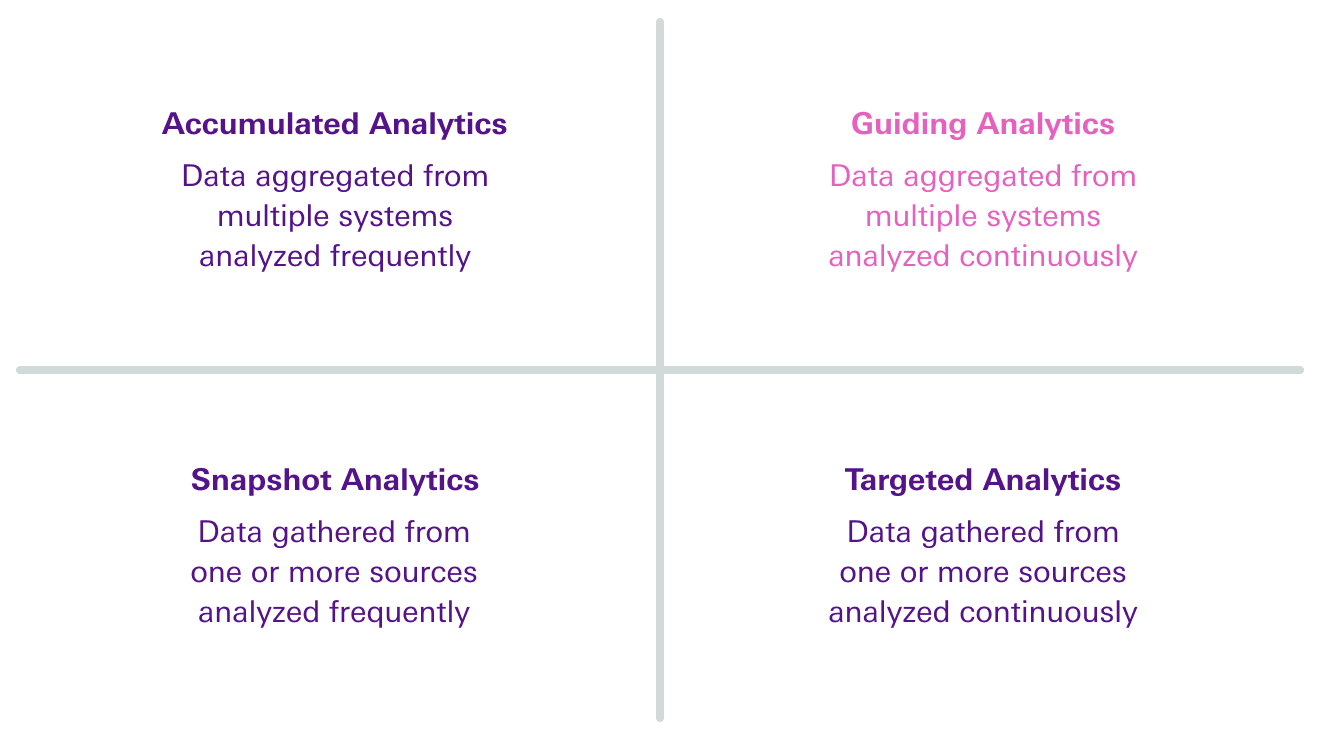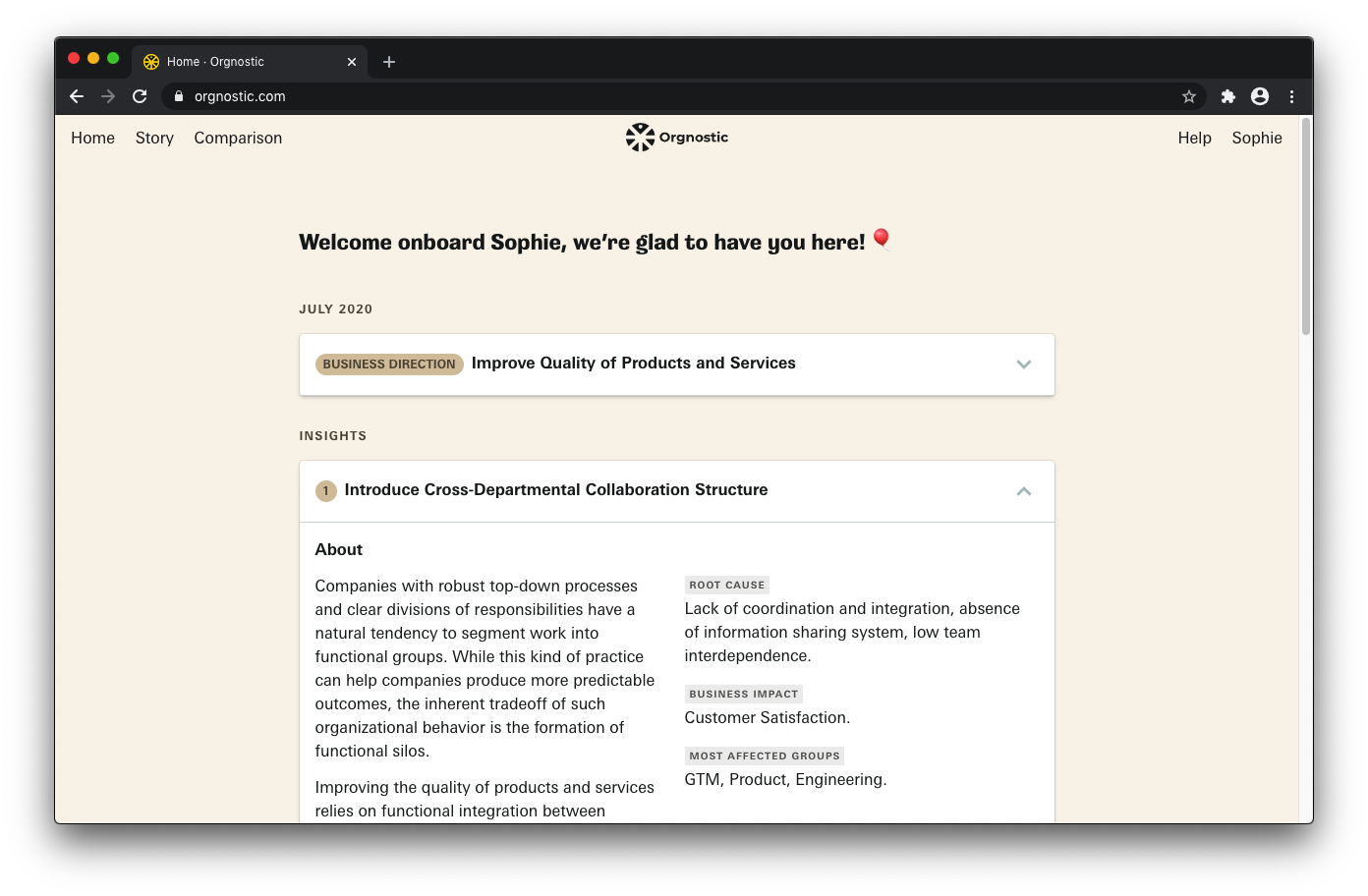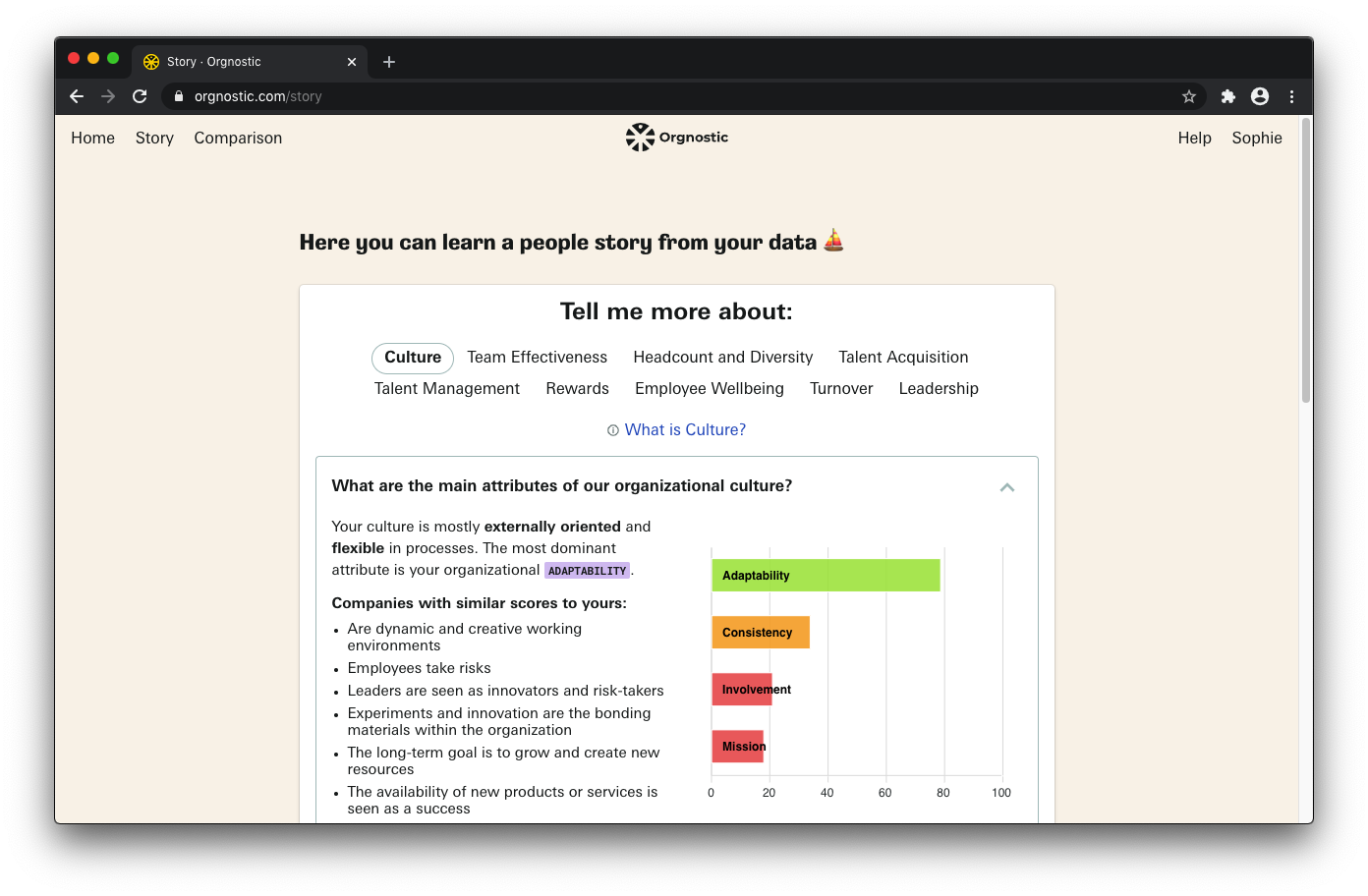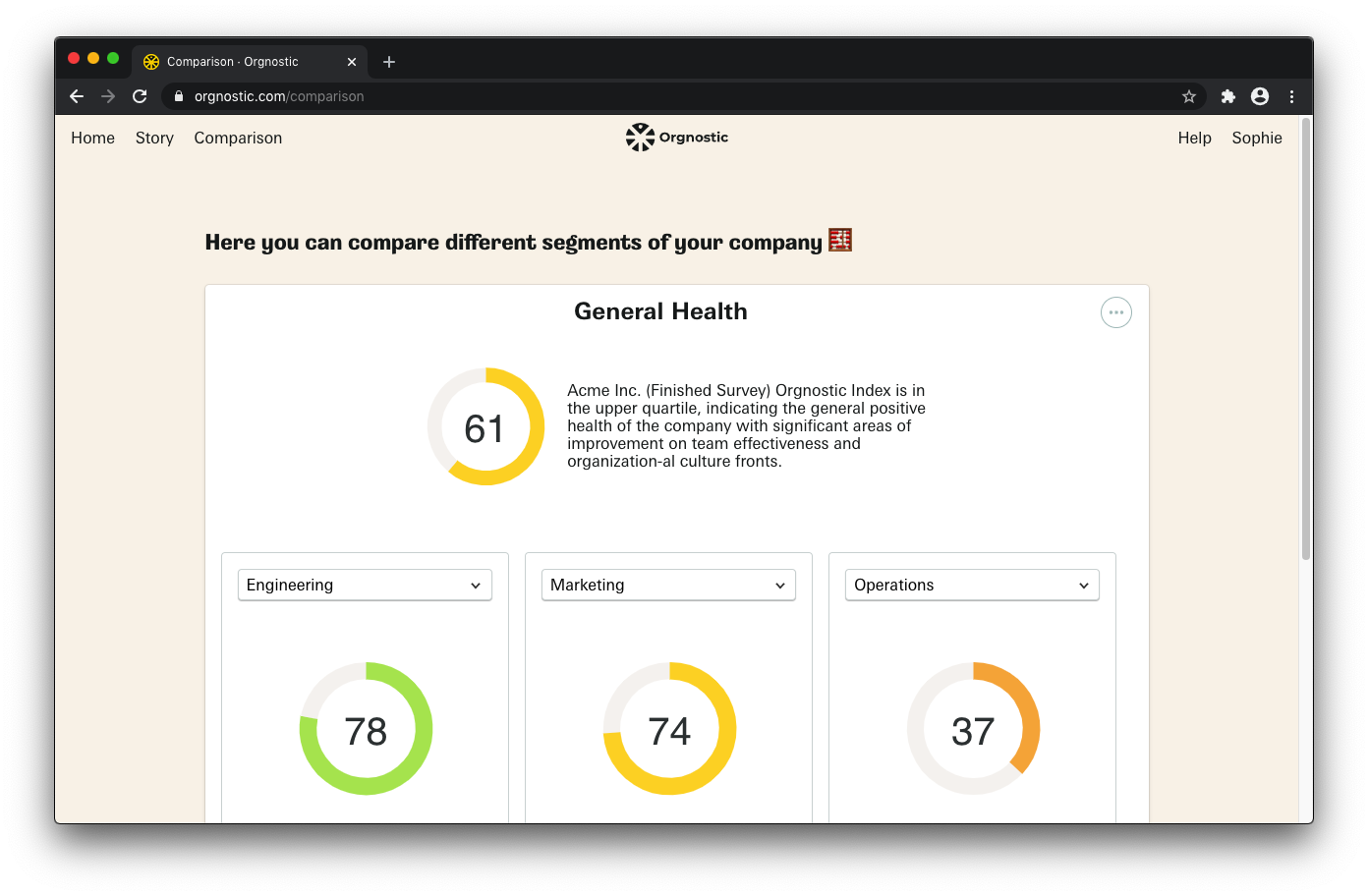After six months of building, we are happy to announce the first version of Orgnostic — a human capital diagnostics platform. Orgnostic aims to improve the health of companies around the world by exposing the knowledge hidden in their HR data and employee experience.
But what do we mean by human capital, why is it important and how is it measurable?
In the business world, financial reports are imperative. But we see them only as part of the equation — the other part is made of people. It’s the people who make the companies successful and make the financial reports so impressive, not the other way around.
So why don’t we pay more attention to teams, leadership and culture? Well, it’s not commonly known if these traits can be quantified. On the other hand, for the ones who believe they can, the question remains — what is the most reliable method to measure human capital?
We hope we’ll help move the needle in the direction of demystifying these paradigms.
Our Approach
Luka already wrote about our approach earlier, but I’ll be comfortable with using a more layman lingo and introducing the phrase “practical science” here. People often perceive science and academia as overly distant from the real world and industry. We’d like to bridge the gap between those two sides and help our customers overcome their organizational challenges with productized, scientifically proven methods.

If we classify products out there based on the analysis frequency and the number of data streams used, our platform best fits in the upper right quadrant.
In addition to “Guiding Analytics” capabilities, the platform enables companies to collect employee experience through benchmarked surveys. This position allows us to connect existing and create new data holistically.
How is this a good position, you might wonder?
The ability to connect both qualitative and quantitative benchmarks, and map them on to existing theory about culture and team effectiveness, help us add a new layer of contextual interpretation. We believe this will enable leadership to have a bird-eye view over their company like never before.
Two steps will take us there:
- Seamlessly integrate and unify all of the existing HR and financial data into a single place
- Fit nicely into existing workflows and enable clear next actions. Remove the fatigue that the overwhelming nature of data brings with it
Embracing Storytelling
Late last year, while testing our MVP with a group of potential customers, we quickly learned that our initial product design hunch was wrong. No one wanted another dashboard to look at — especially a dashboard with such abstract concepts where numbers didn’t explain almost anything.
This meant we needed to go back to the drawing board and rethink the whole user experience. In particular, it meant moving away from the data representation standpoint and taking a path of data interpretation. That’s how we embraced the mantra that “Data is useless if it doesn’t tell the story.”
We are now designing the Orgnostic platform to explain what is happening in the organization, why, and what are the next steps. This approach has double the benefits: besides breaking down the most critical metrics and concepts, we are also educating our customers about them.
Quick Overview
Without getting into too many details now (we’ll dive into features in upcoming posts), here’s a quick overview of the product:
Home
Home is a timeline of events and changes. Here you’ll be able to see what’s happening in your company at a glance. Some of these events are actionable points of leverage that we call Insights.

Insights are broader actionable units (or themes) based on our comprehensive data dive and your company’s Business Direction. They aim to highlight the top three most important actions you should take to challenge bad organizational habits.
The insights are grouped into three layers:
- Organization — the changes you should introduce on your culture level
- Team — or the ways to improve your mission-critical team design
- Leadership — ideas about interventions on the leadership team as the primary change agent
Story
Data without storytelling has little to no value. Story is the feature that guides you through the most important questions about your organization that you need to ask and answer.

“How well do we empower our people?”, “How much money do we invest in employee training?” or “What is the level of psychological safety in our teams?” — we’ve all asked one of those questions, right? Well, now you can get the right data-driven story built to answer over 100 different questions.
Comparison
Comparison is giving you the ability to… wait for it… compare various organizational metrics across business units. It’s a baseball card view of various pockets of your company.
Choose a preset from across multiple metrics or one of 40 metrics from 10 chapters:
- Headcount
- Culture
- Team Effectiveness
- Diversity
- Talent Acquisition
- Talent Management
- Rewards
- Employee Wellbeing
- Turnover
- Leadership

Moving Forward With You
You’re innovative. You want a data-driven approach. You want to measure the intangibles. We’re looking for early adopters, so we can’t wait for you to try Orgnostic in action.
Whether you have known organizational pains, or you’d like to reinforce what you’ve already got right, you’ll find the right balance with Orgnostic platform.